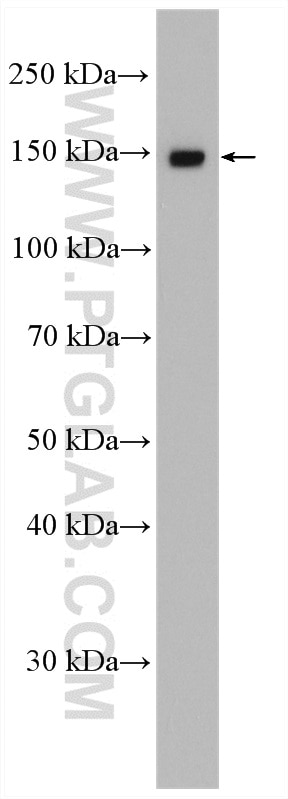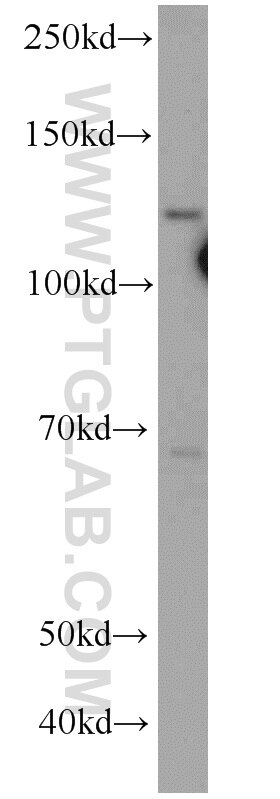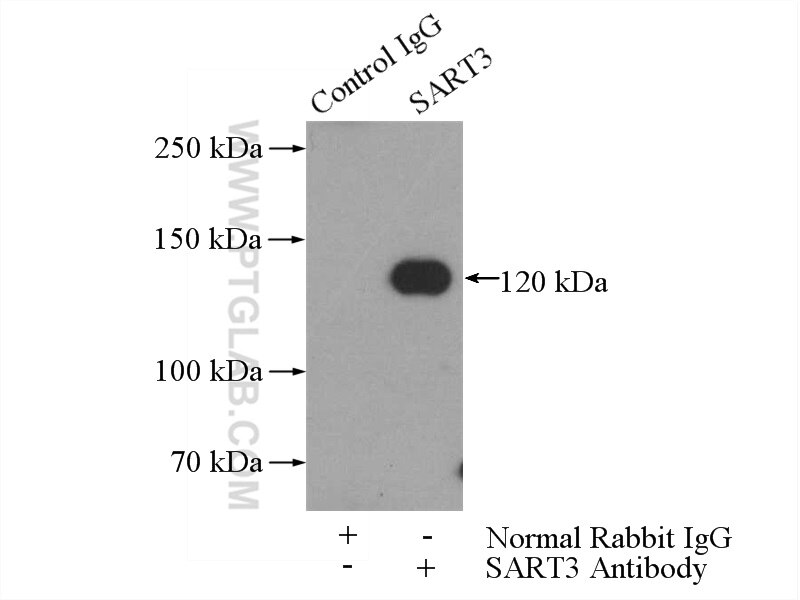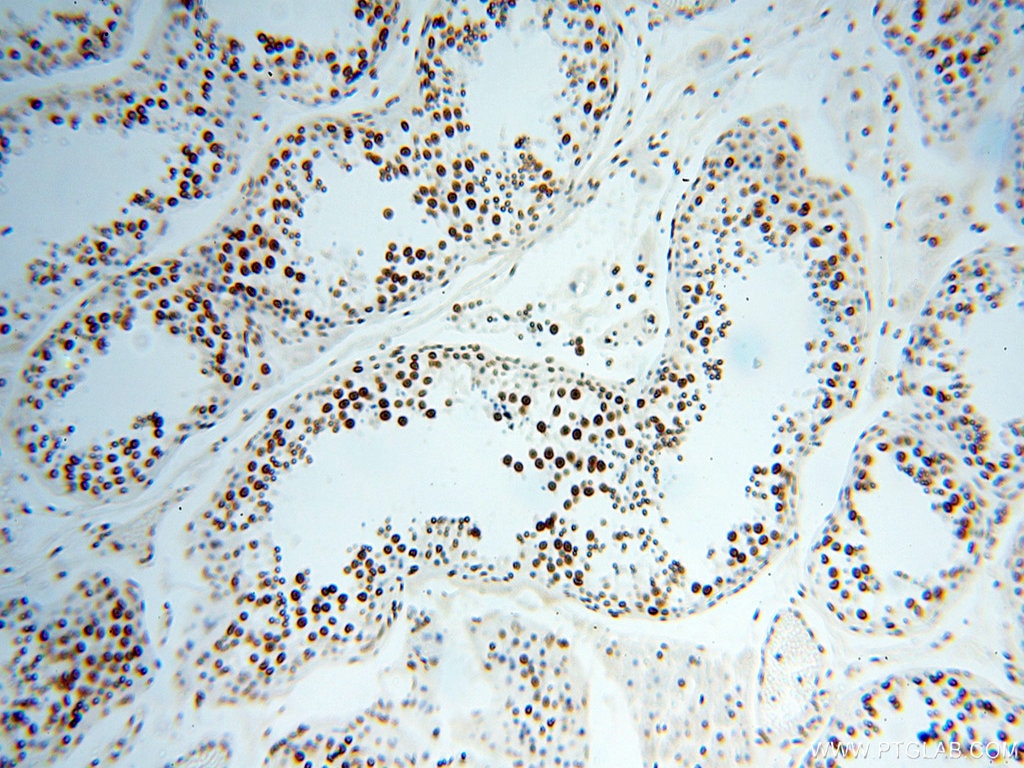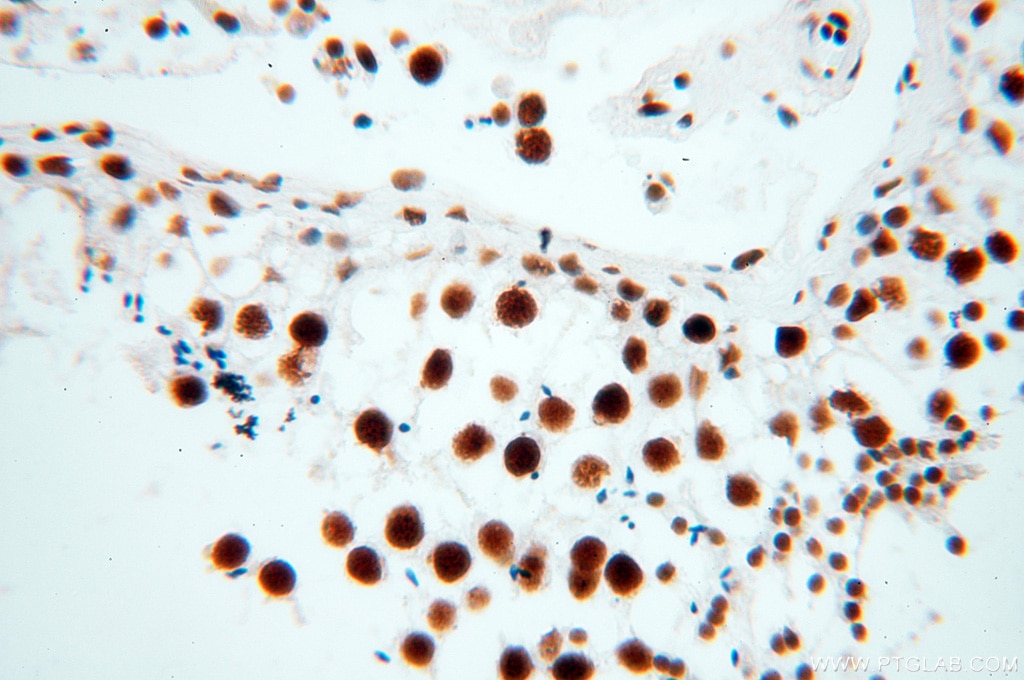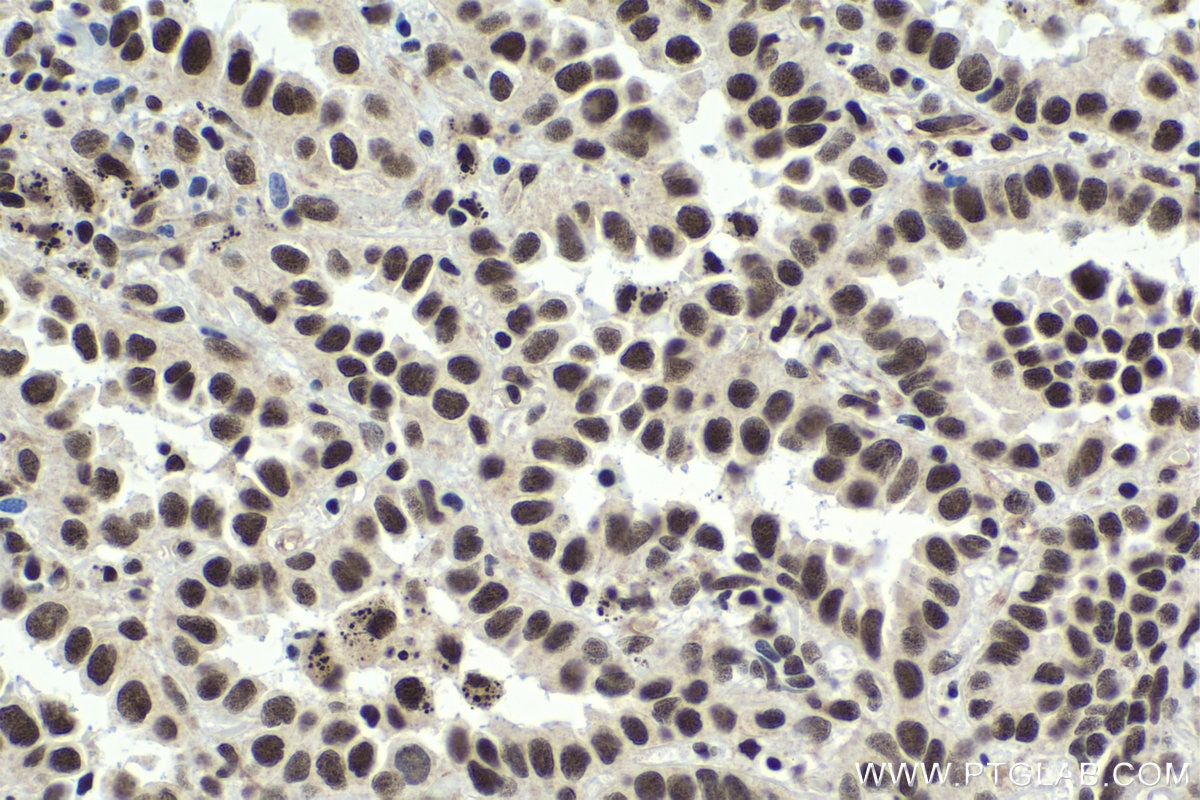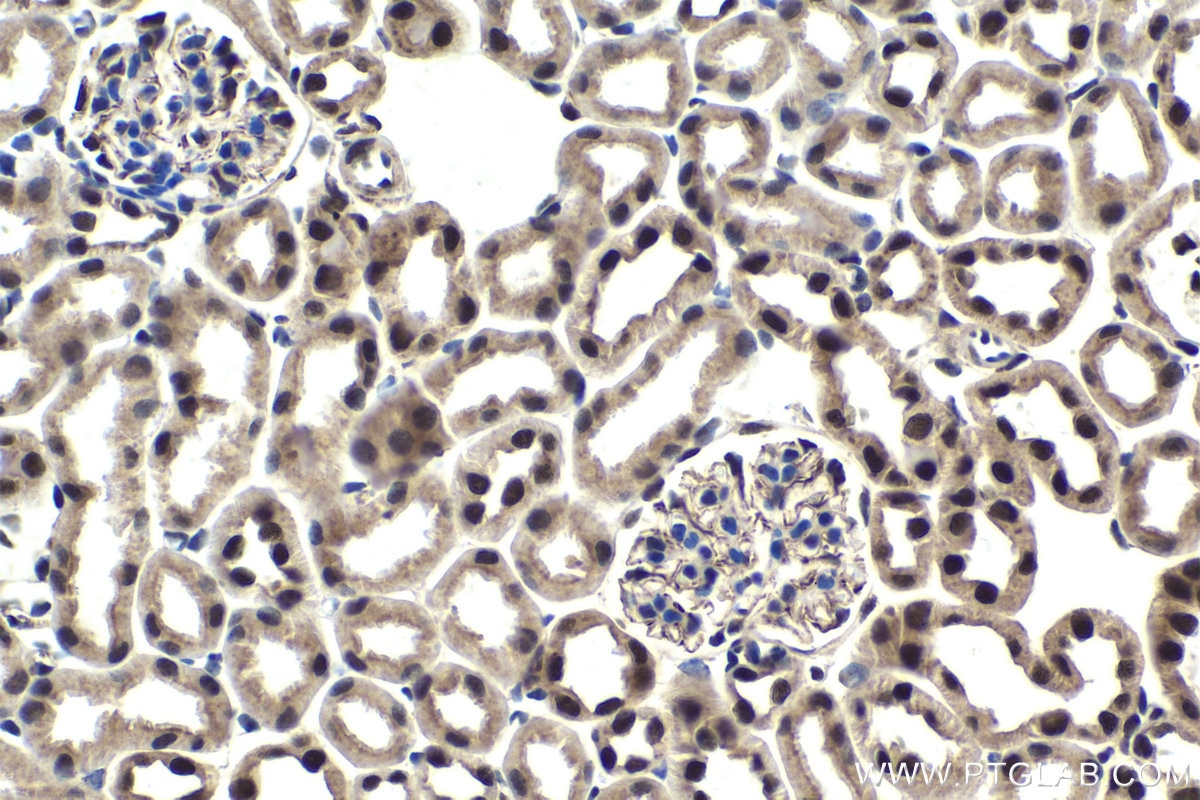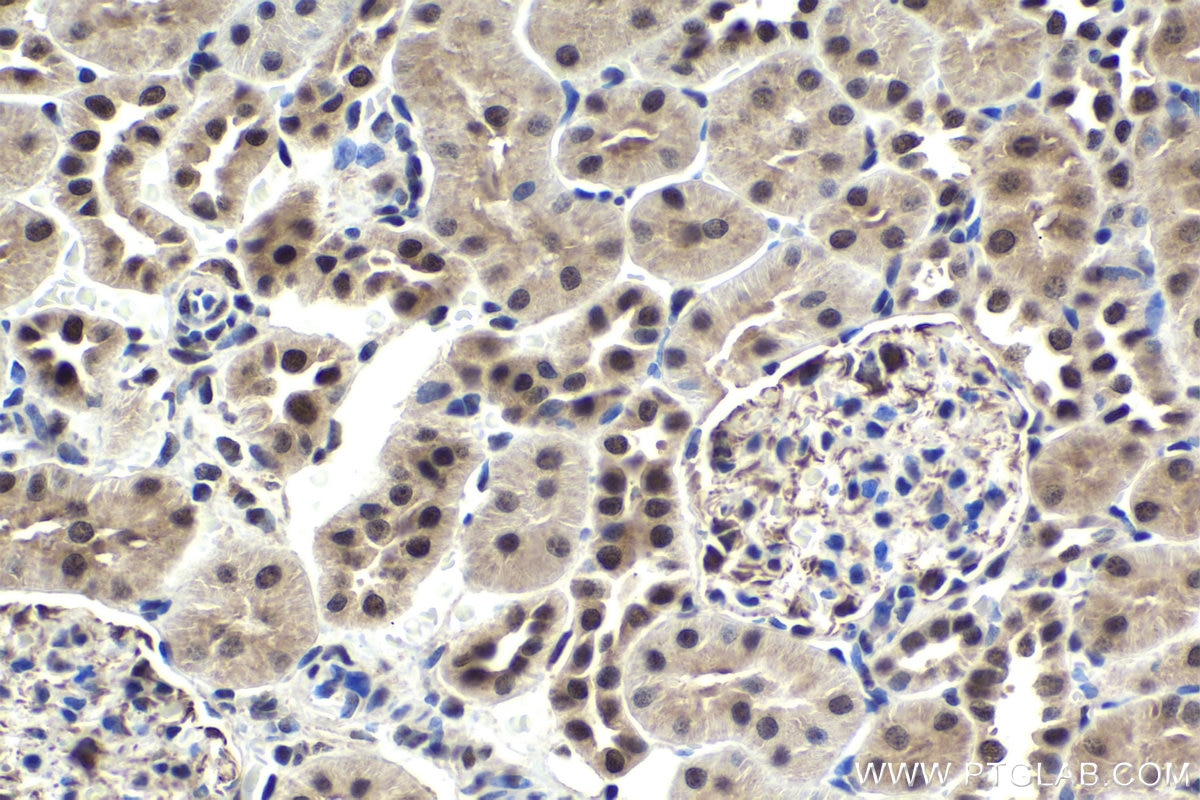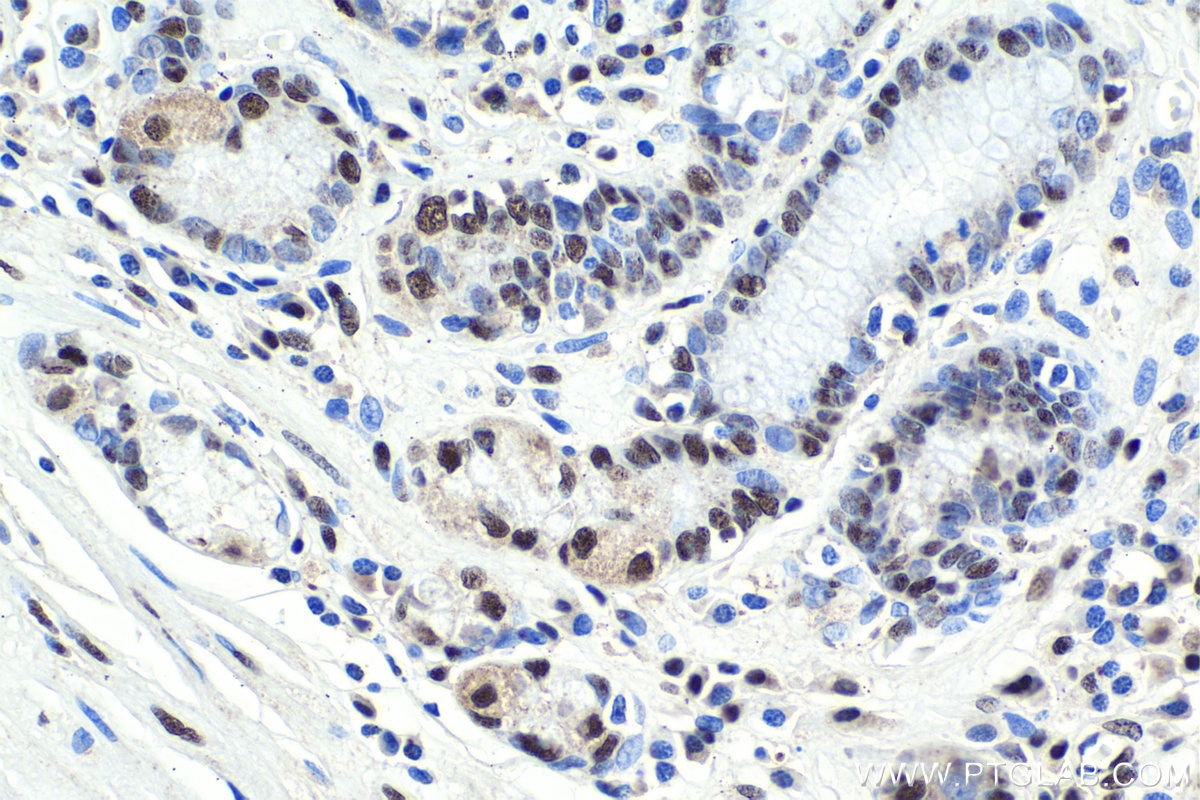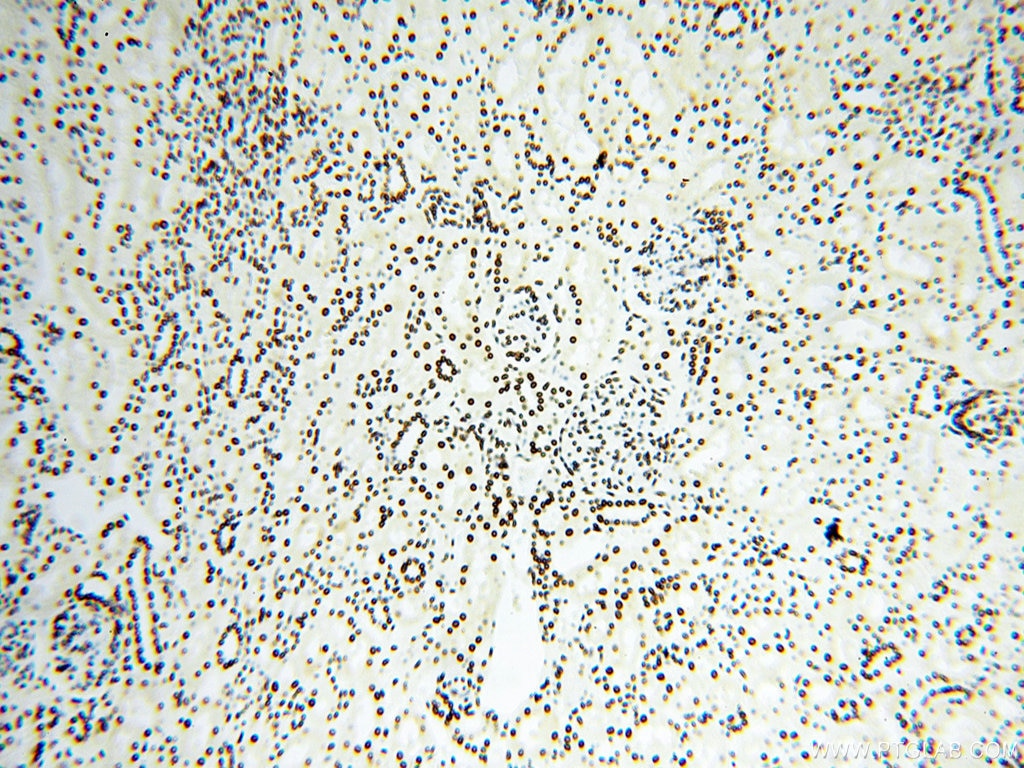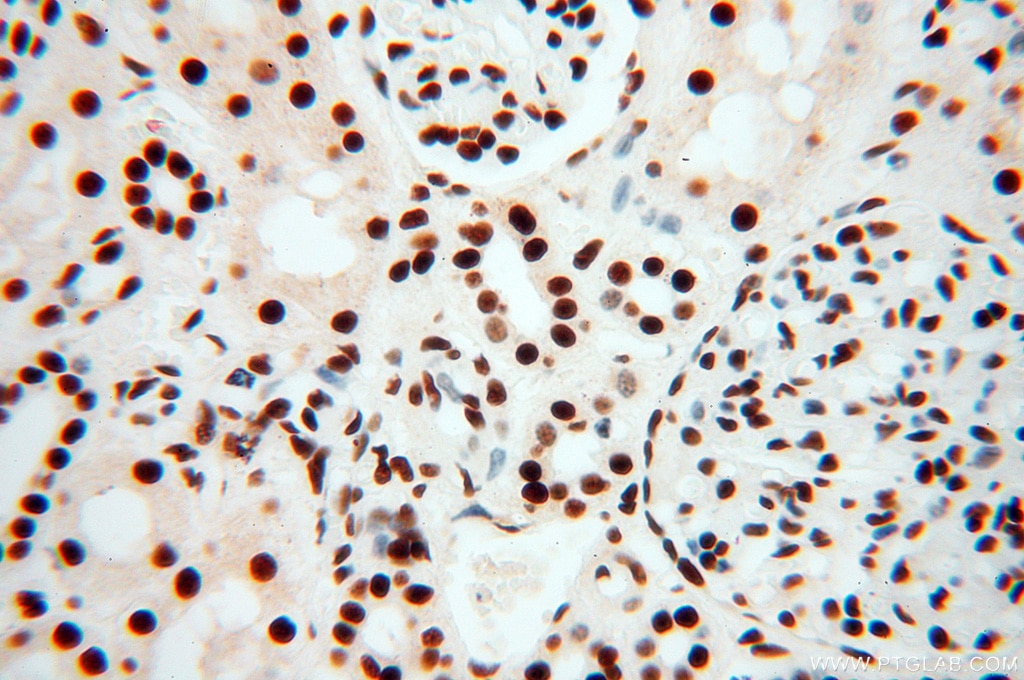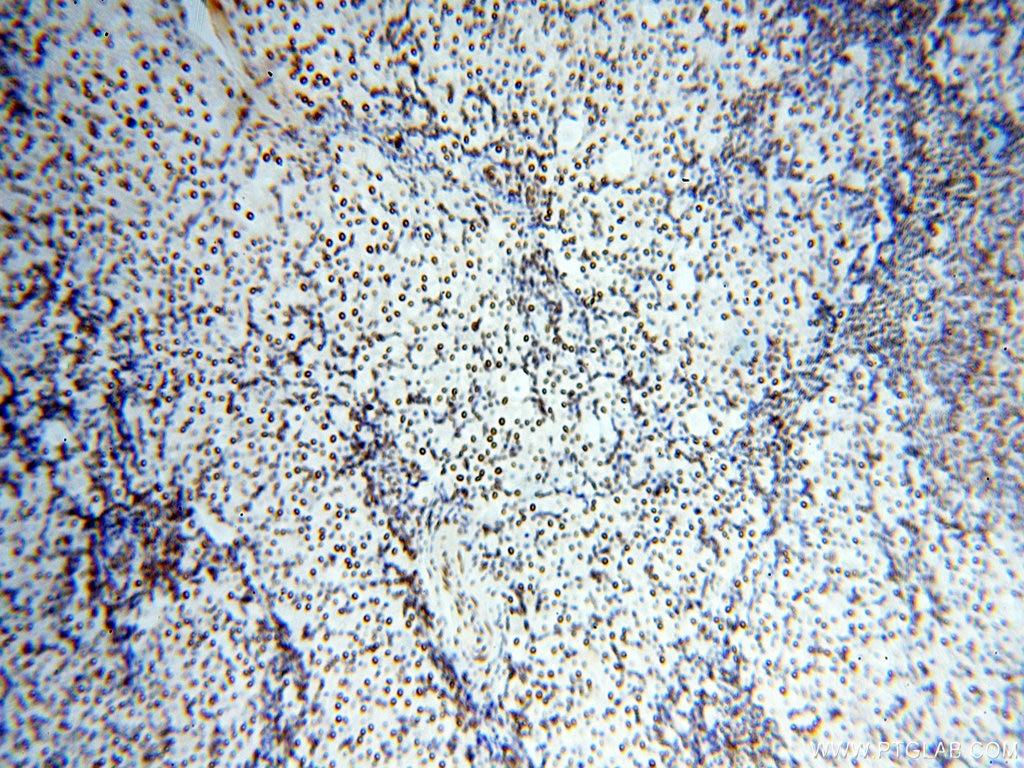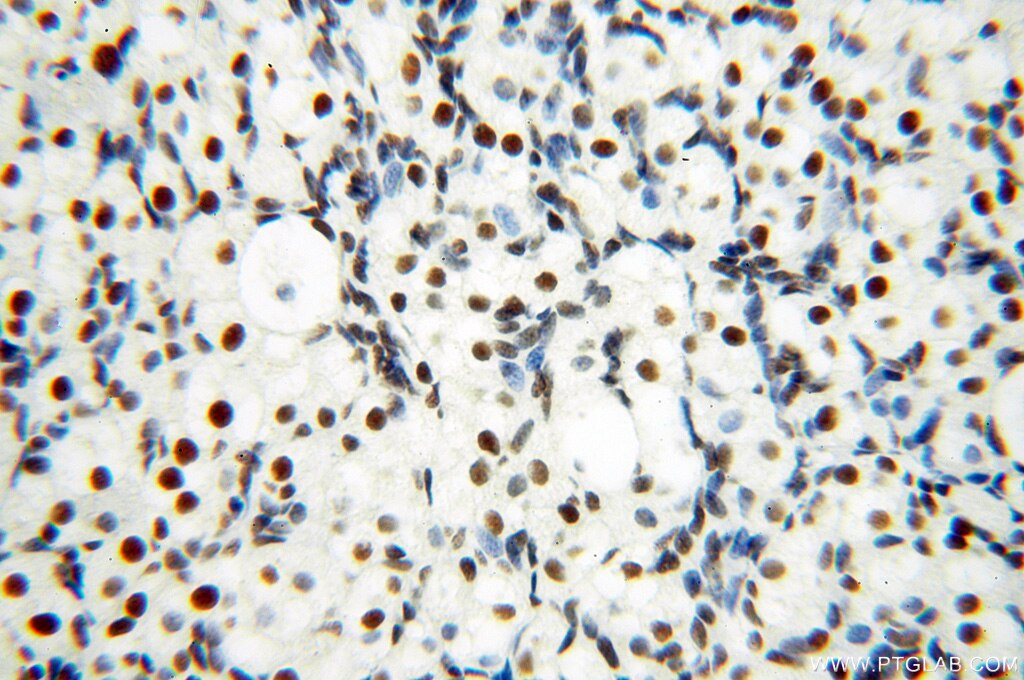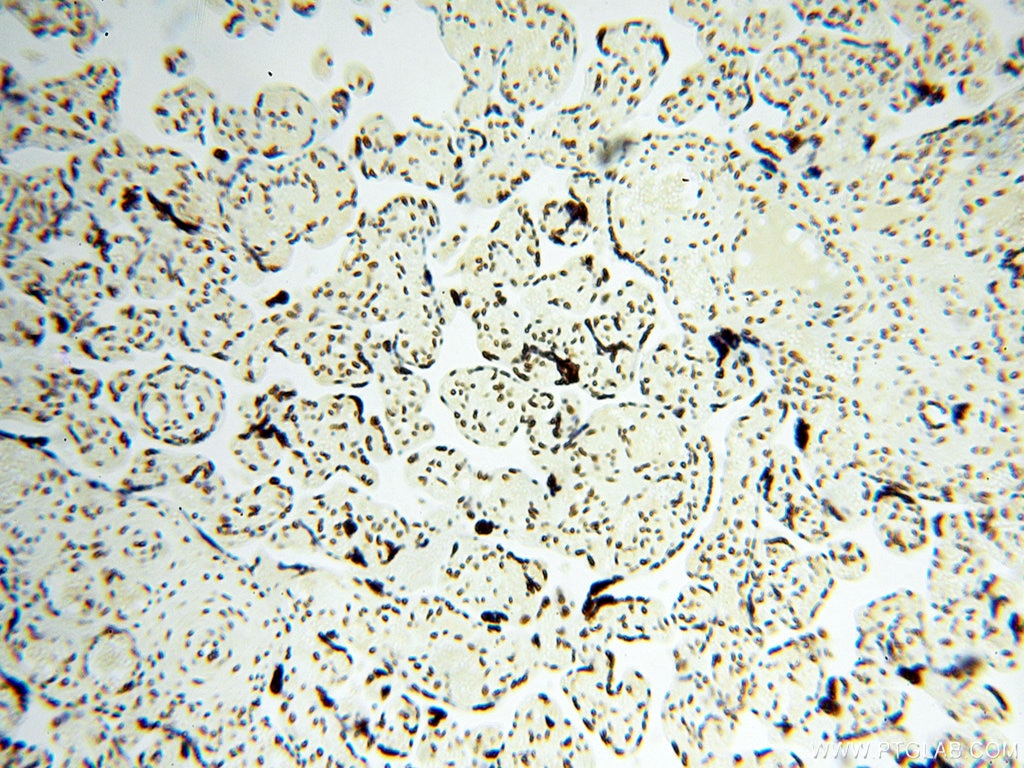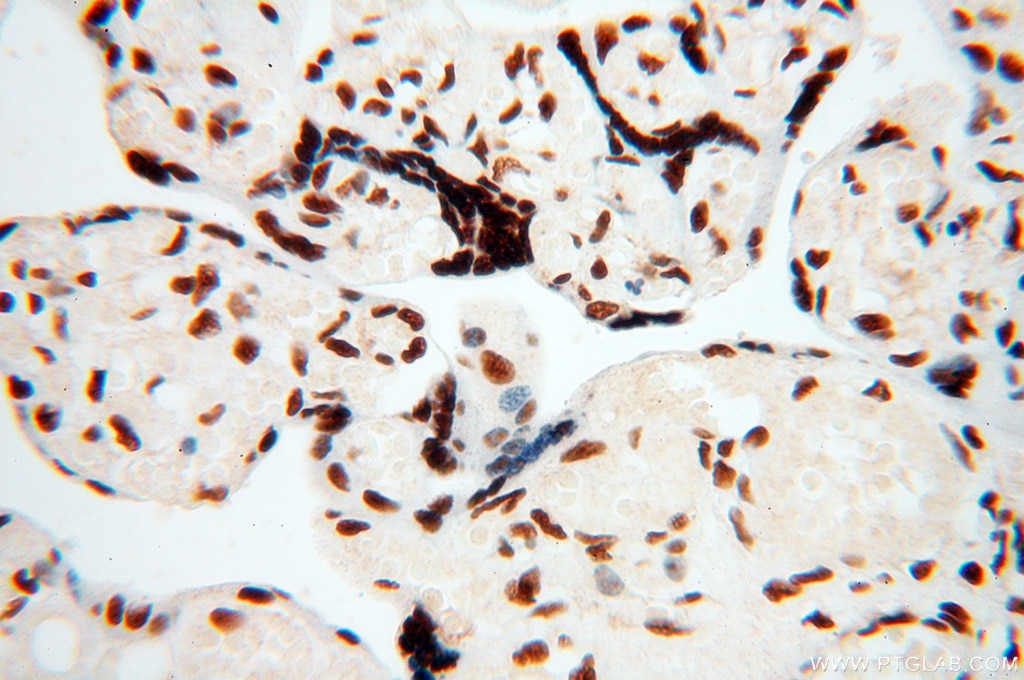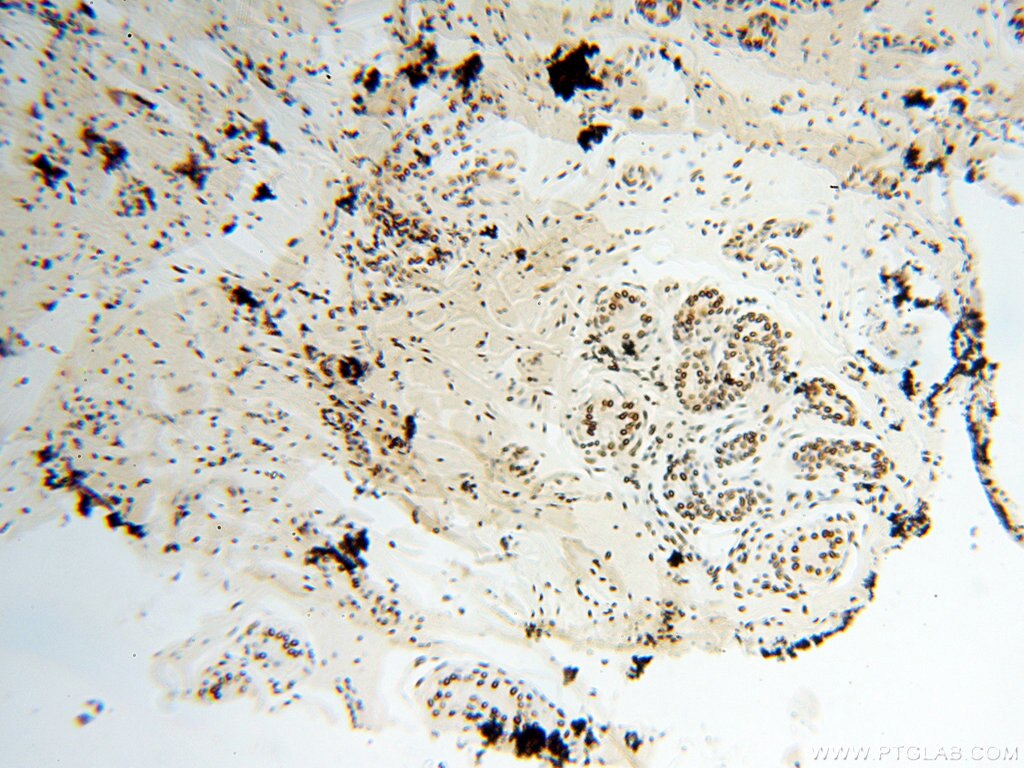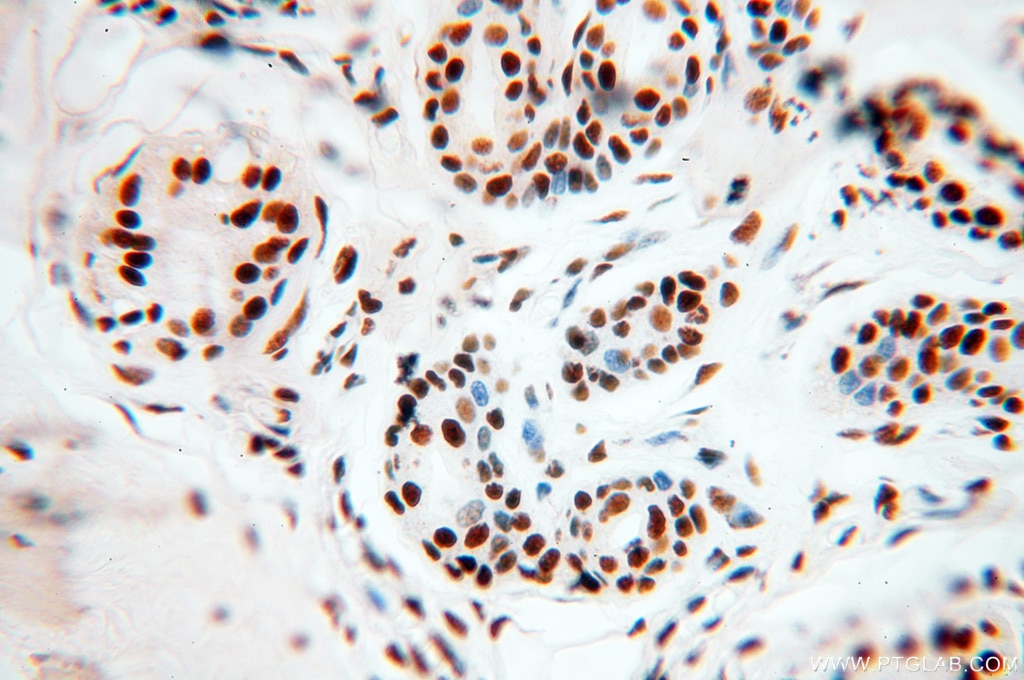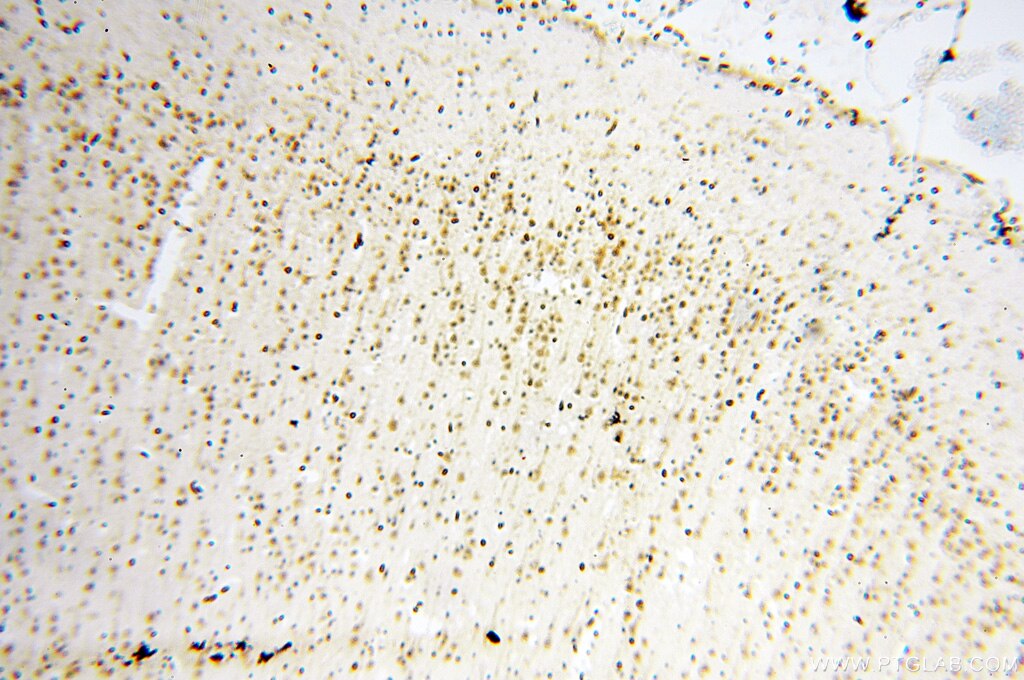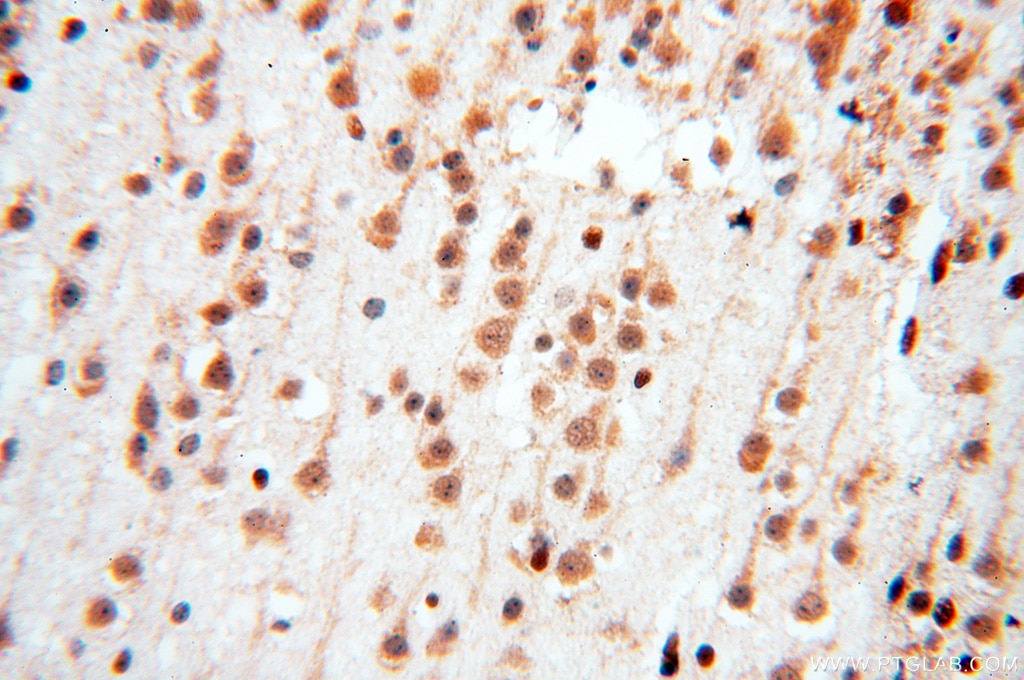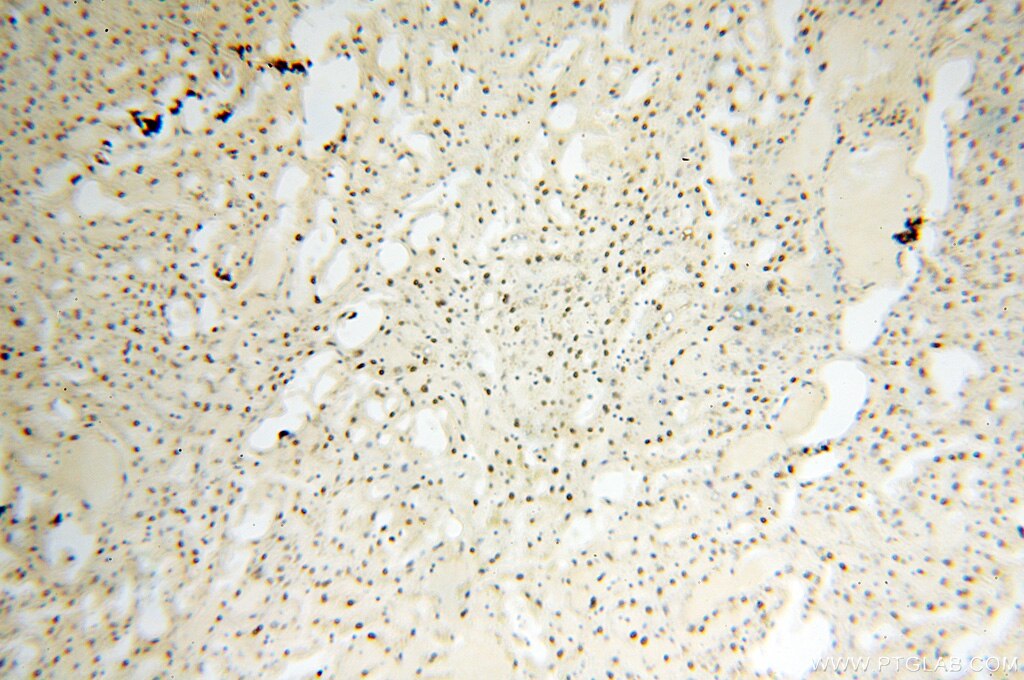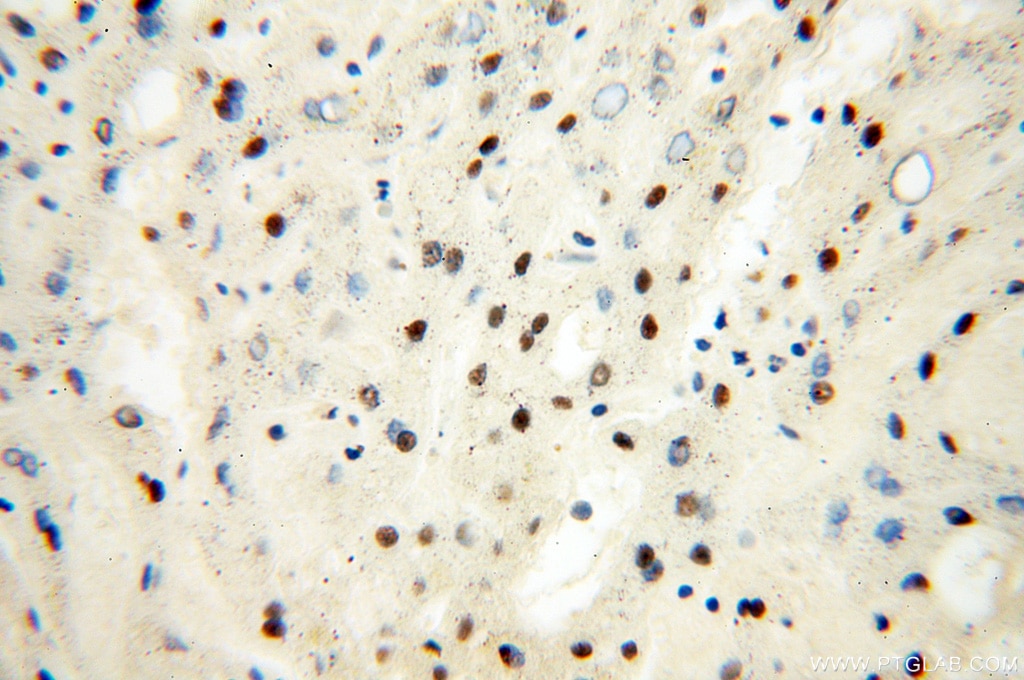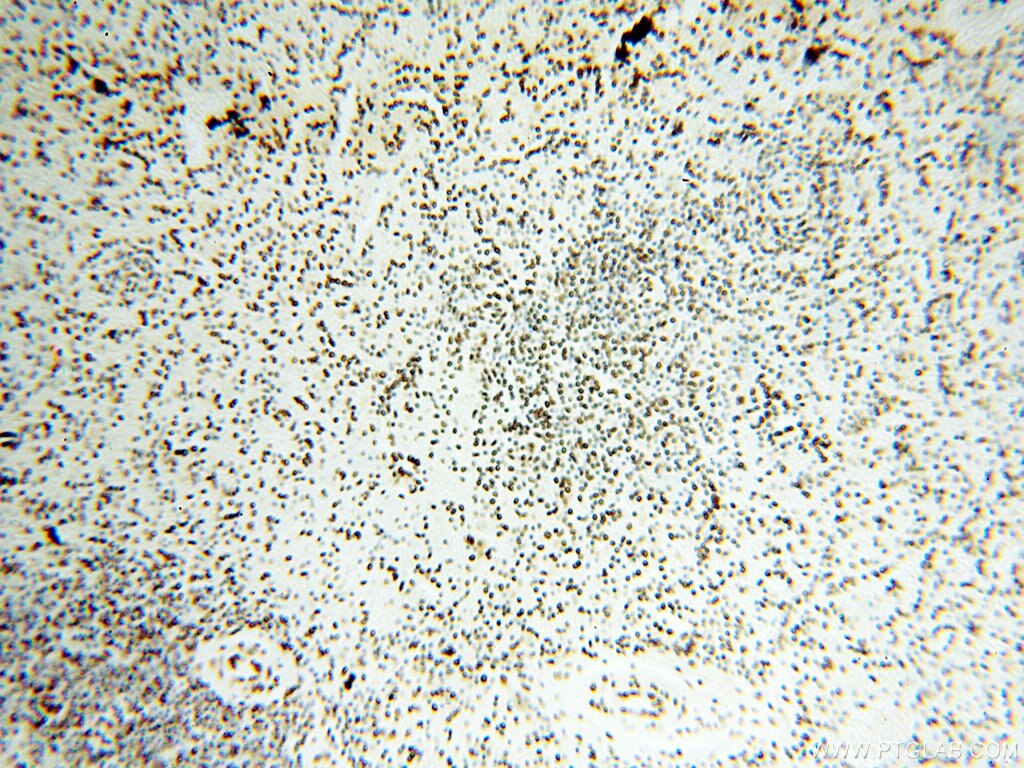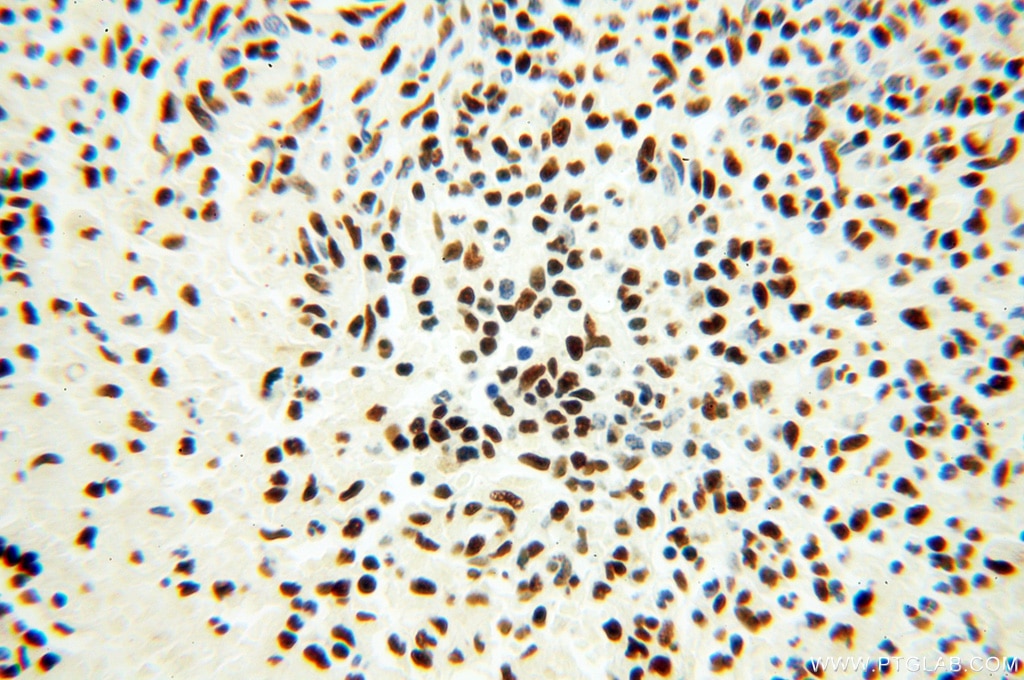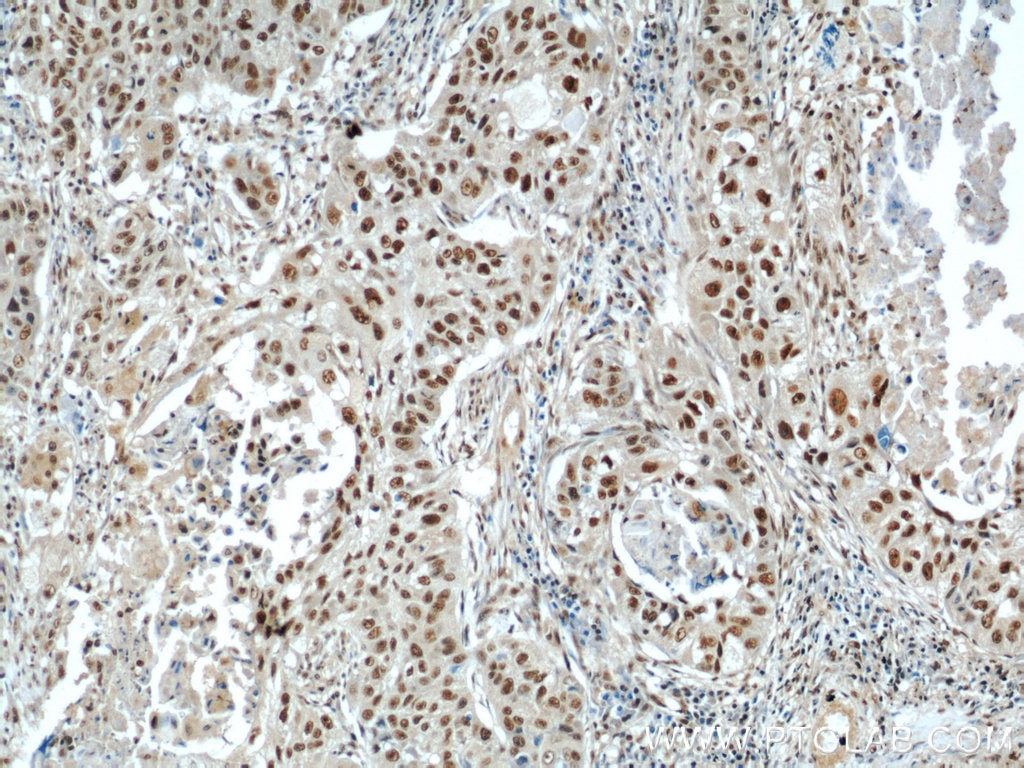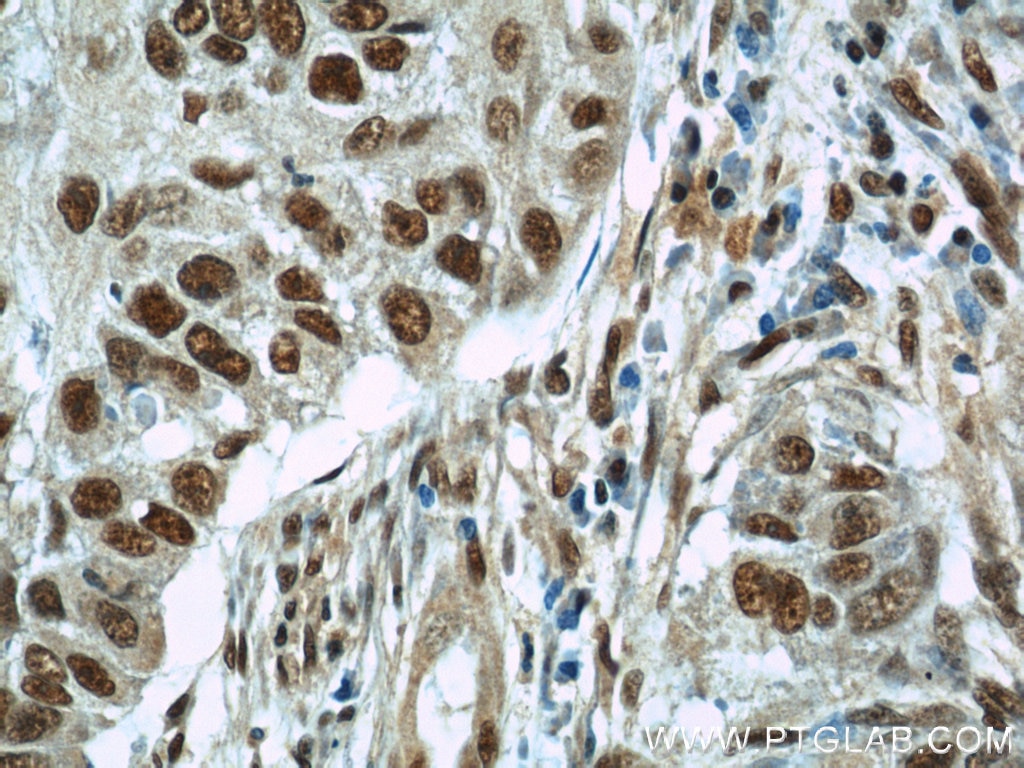Anticorps Polyclonal de lapin anti-SART3
SART3 Polyclonal Antibody for WB, IHC, IP, ELISA
Hôte / Isotype
Lapin / IgG
Réactivité testée
Humain, rat, souris
Applications
WB, IHC, IP, ELISA
Conjugaison
Non conjugué
N° de cat : 18025-1-AP
Synonymes
Galerie de données de validation
Applications testées
| Résultats positifs en WB | cellules Jurkat, |
| Résultats positifs en IP | cellules HeLa |
| Résultats positifs en IHC | tissu de cancer de l'estomac humain, tissu cérébral humain, tissu cutané humain, tissu de cancer du poumon humain, tissu hépatique humain, tissu ovarien humain, tissu placentaire humain, tissu rénal de rat, tissu rénal de souris, tissu rénal humain, tissu splénique humain, tissu testiculaire humain il est suggéré de démasquer l'antigène avec un tampon de TE buffer pH 9.0; (*) À défaut, 'le démasquage de l'antigène peut être 'effectué avec un tampon citrate pH 6,0. |
Dilution recommandée
| Application | Dilution |
|---|---|
| Western Blot (WB) | WB : 1:2000-1:10000 |
| Immunoprécipitation (IP) | IP : 0.5-4.0 ug for 1.0-3.0 mg of total protein lysate |
| Immunohistochimie (IHC) | IHC : 1:500-1:2000 |
| It is recommended that this reagent should be titrated in each testing system to obtain optimal results. | |
| Sample-dependent, check data in validation data gallery | |
Applications publiées
| WB | See 2 publications below |
| IHC | See 1 publications below |
| IP | See 2 publications below |
Informations sur le produit
18025-1-AP cible SART3 dans les applications de WB, IHC, IP, ELISA et montre une réactivité avec des échantillons Humain, rat, souris
| Réactivité | Humain, rat, souris |
| Réactivité citée | Humain, souris |
| Hôte / Isotype | Lapin / IgG |
| Clonalité | Polyclonal |
| Type | Anticorps |
| Immunogène | SART3 Protéine recombinante Ag12590 |
| Nom complet | squamous cell carcinoma antigen recognized by T cells 3 |
| Masse moléculaire calculée | 963 aa, 110 kDa |
| Poids moléculaire observé | 110-120 kDa |
| Numéro d’acquisition GenBank | BC093784 |
| Symbole du gène | SART3 |
| Identification du gène (NCBI) | 9733 |
| Conjugaison | Non conjugué |
| Forme | Liquide |
| Méthode de purification | Purification par affinité contre l'antigène |
| Tampon de stockage | PBS with 0.02% sodium azide and 50% glycerol |
| Conditions de stockage | Stocker à -20°C. Stable pendant un an après l'expédition. L'aliquotage n'est pas nécessaire pour le stockage à -20oC Les 20ul contiennent 0,1% de BSA. |
Informations générales
The process of mRNA splicing required assembly of pre-mRNA into a large, dynamic RNA-protein complex, in which 5 small nuclear RNAs and more than 50 protein components are incorporated into functional small nuclear ribonucleoproteins(snRNPs). SART3 interacts with U6 snRNA and functioned as a U6-specific recycling factor responsible for regeneration of base-paired U4/U6 snRNPs from post-spliceosomal free U4 and U6 snRNPs. Also it can interact and regulate Tat transactivation activity, and act as a cellular factor for HIV-1 gene expression and viral replication.
Protocole
| Product Specific Protocols | |
|---|---|
| WB protocol for SART3 antibody 18025-1-AP | Download protocol |
| IHC protocol for SART3 antibody 18025-1-AP | Download protocol |
| IP protocol for SART3 antibody 18025-1-AP | Download protocol |
| Standard Protocols | |
|---|---|
| Click here to view our Standard Protocols |
Publications
| Species | Application | Title |
|---|---|---|
Sci Adv Enhanced packaging of U6 small nuclear RNA and splicing-related proteins into extracellular vesicles during HIV infection | ||
J Biol Chem Identification of a 35S U4/U6.U5 Tri-snRNP Complex Intermediate in Spliceosome Assembly. | ||
Mol Cell Biol USP15 deubiquitinates TUT1 associated with RNA metabolism and maintains cerebellar homeostasis. | ||
Aging (Albany NY) SART3, regulated by p53, is a biomarker for diagnosis, prognosis and immune infiltration in hepatocellular carcinoma |
